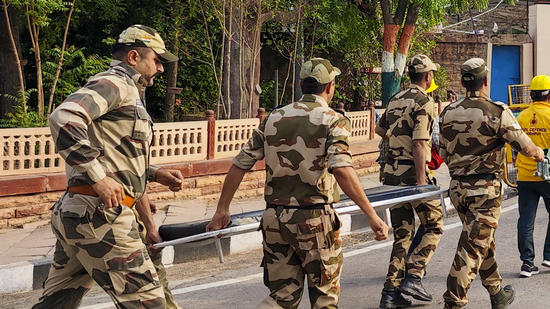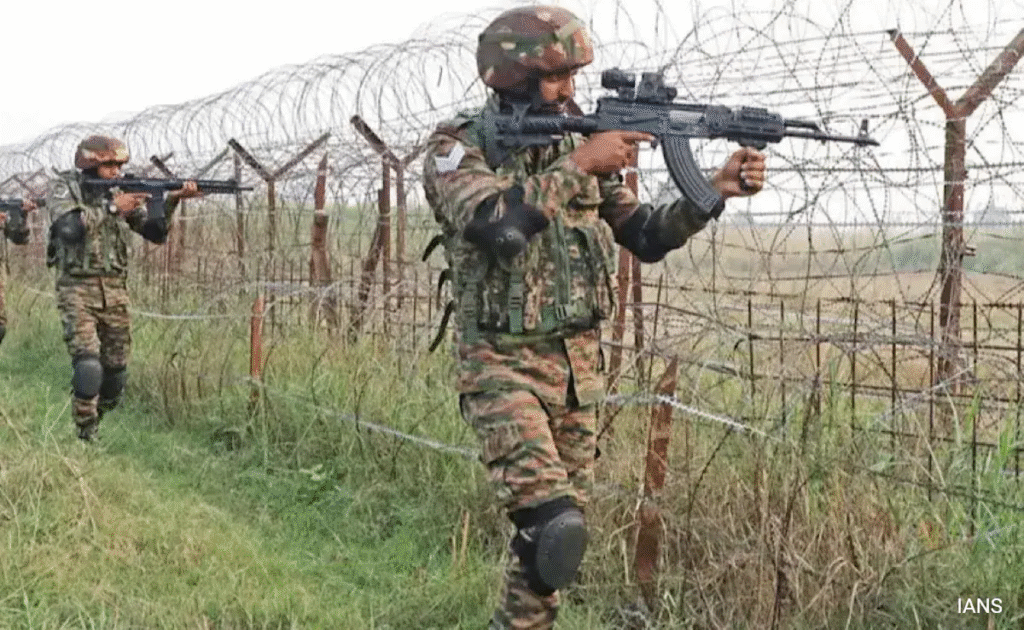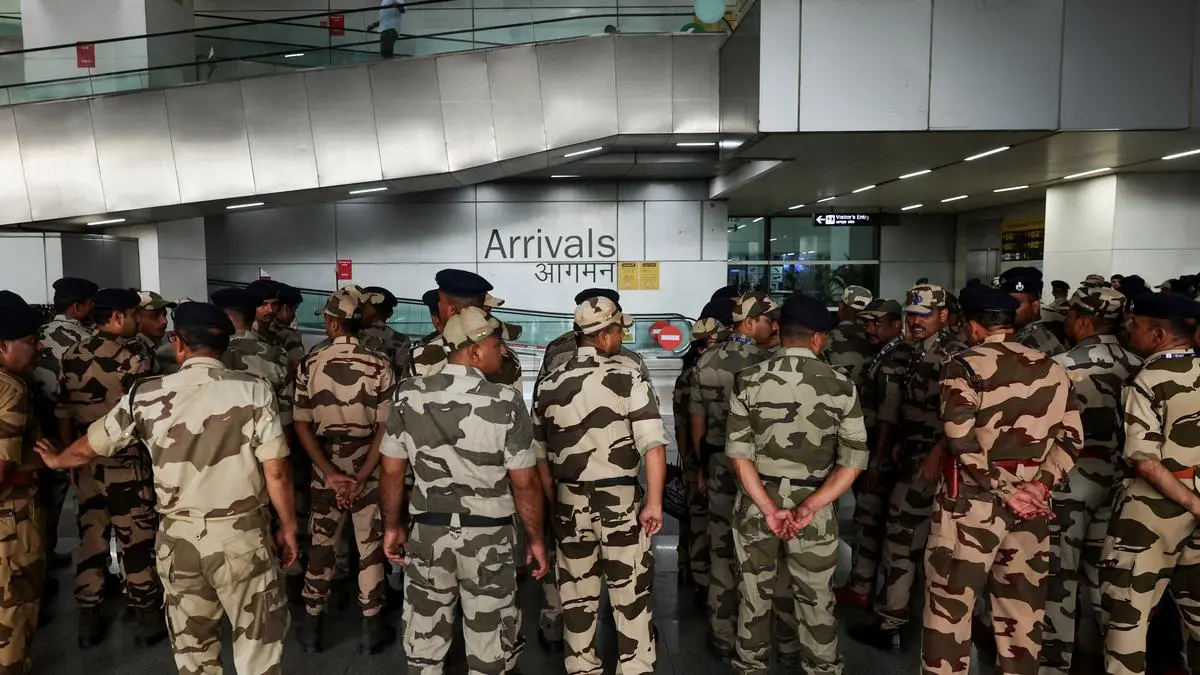
The decades-long conflict between India and Pakistan over the disputed region of Jammu and Kashmir has been one of the most enduring and complex conflicts in modern history. Both nations, separated by a fragile and highly militarized Line of Control (LoC), have witnessed numerous wars, skirmishes, and ceasefire violations that have cost thousands of lives and created immense human suffering. However, the recent announcement of a renewed commitment to maintain the ceasefire along the LoC marks a significant and hopeful turning point. This article explores the nuances, historical context, military implications, geopolitical significance, and the road ahead in light of this important development.
Historical Context of the India-Pakistan Conflict Over Kashmir
The origins of the conflict date back to the partition of British India in 1947, when the princely state of Jammu and Kashmir became a major bone of contention. Its ruler’s decision to accede to India sparked an immediate conflict with Pakistan, which claimed the territory based on its Muslim-majority population. Since then, the two countries have fought three major wars—1947-48, 1965, and 1999 (Kargil conflict)—and countless border skirmishes. The establishment of the Line of Control following the Simla Agreement of 1972 formalized the de facto border but failed to resolve the underlying dispute.
Ceasefire agreements along the LoC have historically been fragile, with multiple violations, cross-border firing, and infiltration attempts. The 2003 ceasefire agreement, brokered to reduce hostilities, brought a measure of stability but was never fully respected by either side. The cycle of violence often flared up in response to terrorist attacks, political provocations, or military incidents.
Renewed Ceasefire: Significance and Immediate Impact
The recent reaffirmation of the ceasefire pact between India and Pakistan is more than just another agreement. It is a testament to both countries’ recognition that prolonged conflict drains resources, disrupts lives, and hampers development. Military and civilian leaders from both sides appear to be signaling a desire to halt the bloodshed, at least temporarily, and focus on more constructive engagement.
Reports emerging from Rawalpindi, the nerve center of Pakistan’s military operations, indicate a heightened state of readiness even as efforts to maintain peace continue. According to Lt Gen Sumer Ivan D’Cunha, a respected defense analyst, this ceasefire is “not just a temporary lull but an indicator of shifting dynamics in regional politics.” His assessment suggests that while the ceasefire is delicate, it is backed by strategic considerations beyond the battlefield.
Military Realities on the Ground Amid the Ceasefire
Maintaining a ceasefire in a highly militarized and sensitive zone like the LoC requires constant vigilance and disciplined restraint. The armies of India and Pakistan remain on high alert, wary of infiltration attempts and provocations by non-state militant actors who have historically exploited periods of calm to regroup or launch attacks.
Pakistan’s army continues to fortify its positions in Rawalpindi and along the border, balancing the need for peace with preparedness. On the Indian side, army units along the LoC maintain enhanced surveillance through the deployment of sophisticated technologies such as drones, radars, and thermal imaging systems. Intelligence agencies work relentlessly to track militant activities and prevent infiltration.
While ceasefire violations have reportedly reduced significantly, occasional stray incidents and firing occur, often quickly controlled to prevent escalation. Both militaries are aware that any breach could derail the fragile peace, making restraint paramount.
Geopolitical and Strategic Implications of the Ceasefire
The renewed ceasefire holds implications far beyond the immediate reduction in violence. For India, peace on the LoC opens avenues for focusing on economic development, infrastructure growth, and enhancing global diplomatic relations. A peaceful Kashmir means diverting resources from defense to welfare, and a more stable international image.
For Pakistan, the ceasefire offers the chance to alleviate some of the economic and diplomatic pressures it faces internationally. With sanctions and criticisms related to terrorism and regional instability, Pakistan’s image on the world stage could improve if it is seen as a responsible stakeholder in peace efforts.
Moreover, the ceasefire may act as a catalyst for diplomatic dialogues, trade normalization, and people-to-people contact initiatives that have long been stalled. Confidence-building measures, such as the opening of trade routes and easing travel restrictions, could be on the horizon if the peace holds.
The Role of International Stakeholders and Organizations
The India-Pakistan conflict has drawn considerable international attention for decades. Global powers such as the United States, China, Russia, and members of the European Union continuously urge peaceful resolution and dialogue. The United Nations has historically passed resolutions calling for respect for ceasefire agreements and peaceful settlement of disputes.
The renewed ceasefire aligns with the interests of the international community in maintaining regional stability. South Asia, home to over 1.8 billion people, is strategically crucial for global trade routes, energy supplies, and geopolitical influence. Any conflict escalation risks disrupting global peace and triggering humanitarian crises.
International players also act as mediators and observers, sometimes facilitating back-channel talks or sponsoring confidence-building measures. Their involvement, while often cautious due to sovereignty issues, remains vital in maintaining dialogue and providing platforms for negotiation.
Challenges to Sustained Peace and Stability
Despite the positive development, challenges to a lasting peace remain formidable. The deep-rooted mistrust between India and Pakistan, fueled by decades of conflict and propaganda, continues to cast a shadow over any peace efforts. Both countries have domestic political landscapes where nationalist and hardline elements wield significant influence and often oppose compromises.
Militant groups and terrorists, whose presence in the region complicates the situation, remain a persistent threat. Their actions often provoke retaliatory measures, threatening the ceasefire’s stability. Both governments face the difficult task of balancing military security with diplomatic outreach.
The civilian populations living near the LoC bear the brunt of conflict, enduring shelling, displacement, economic hardship, and trauma. Humanitarian issues remain a pressing concern, with many families living in constant fear and uncertainty.
Additionally, Kashmir’s political status remains a contentious issue. India’s 2019 decision to revoke Jammu and Kashmir’s special autonomy stirred tensions further, leading to protests and unrest. Pakistan’s support for Kashmiri self-determination continues to be a major sticking point in negotiations.
The Human Dimension: Lives Affected by Decades of Conflict
Beyond geopolitics and military strategy lies the profound human cost of the India-Pakistan conflict. The people living along the LoC, including both civilians and soldiers, endure hardship daily. Families are often caught in crossfire, forced to evacuate their homes, and live under the constant threat of violence.
Education, healthcare, and economic opportunities in these regions are severely impacted by instability. Many children grow up witnessing conflict, which can perpetuate cycles of violence and hatred. Mental health issues and trauma are widespread but often neglected.
Humanitarian organizations working in the region face enormous challenges in delivering aid and support. Cross-border cooperation in these areas is crucial but complicated by political mistrust.
The ceasefire, if sustained, offers a glimmer of hope to these communities—a chance for children to attend school safely, for farmers to work their fields without fear, and for families to rebuild their lives.
Economic Opportunities from Peace

A stable border situation can unlock significant economic benefits for both India and Pakistan. Trade between the two countries has been minimal due to hostilities, but peace could open doors to cross-border commerce that benefits local populations.
Historically, trade routes between Kashmir and Pakistan facilitated economic and cultural exchanges. Reviving such connections could spur development, create jobs, and reduce poverty. Joint ventures in tourism, handicrafts, and agriculture have potential for growth if the region stabilizes.
Moreover, peace could attract foreign investment into Kashmir and border areas, which have suffered from underdevelopment. Improved infrastructure, connectivity, and security would make the region more attractive for business.
Economic interdependence could also strengthen peace by creating mutual stakes in stability, reducing incentives for conflict.
Potential for Diplomatic Engagement and Confidence-Building
The ceasefire provides a platform for renewed diplomatic engagement between India and Pakistan. Past attempts at dialogue, such as the Agra Summit (2001) and the Composite Dialogue Process, were often derailed by external events or internal politics. However, sustained peace on the ground can help create a conducive environment for talks.
Confidence-building measures, such as increased communication between military commanders, humanitarian exchanges, and cultural initiatives, could pave the way for more substantive discussions on core issues.
People-to-people contact initiatives, including student exchanges, joint cultural festivals, and media collaborations, can humanize the “other side” and reduce mistrust.
Diplomacy, if pursued with sincerity and pragmatism, can address contentious issues like Kashmir’s political status, terrorism, and water sharing, leading to a comprehensive peace framework.
The Role of Media and Civil Society
Media and civil society have a pivotal role in shaping public perceptions and promoting peace. Balanced and responsible journalism can counter inflammatory narratives and foster understanding.
Grassroots peace movements, NGOs, and academic exchanges can build bridges between communities separated by conflict. Their work in promoting dialogue, reconciliation, and development is essential for long-term stability.
Media campaigns that highlight stories of cooperation, resilience, and common heritage can challenge divisive rhetoric and promote empathy.
The Risks of Complacency and the Need for Vigilance
While the ceasefire is a positive step, it is not a guarantee of permanent peace. Both India and Pakistan must remain vigilant against provocations and spoilers who seek to undermine peace for political or ideological reasons.
Complacency could lead to security lapses or miscalculations that trigger renewed violence. Therefore, ongoing military preparedness alongside diplomatic efforts is essential.
Civil society and political leaders must continue to push for dialogue and restraint, ensuring that peace is protected as a national and regional priority.
Looking Ahead: A Fragile but Promising Path
The India-Pakistan ceasefire agreement represents a fragile but promising path toward peace in a region long plagued by conflict. It is a reminder that even the most entrenched conflicts can find moments of reprieve when both sides prioritize human lives and stability.
The road ahead will require patience, courage, and a willingness to address difficult issues with honesty and flexibility. It demands that the voices of moderation and peace prevail over those of conflict and division.
If nurtured carefully, the ceasefire could become the foundation for a broader peace process that benefits millions of people, fosters economic prosperity, and enhances regional security.
Conclusion: Embracing Hope in Uncertain Times
In a world where conflicts often seem intractable, the renewed India-Pakistan ceasefire is a beacon of hope. It symbolizes the possibility of moving beyond decades of hostility toward a future where dialogue, cooperation, and coexistence define relations between neighbors.
The international community watches with cautious optimism, recognizing that the stakes are high. The peace of South Asia impacts global security, economic stability, and human welfare.
Ultimately, the responsibility rests with India and Pakistan to seize this opportunity. It is a moment to demonstrate leadership, empathy, and vision—qualities that can transform not only the fate of Kashmir but also the broader South Asian region.
Peace is never easy, but it is always worth striving for. This ceasefire may well be the first step on a long journey toward lasting harmony and shared prosperity.

